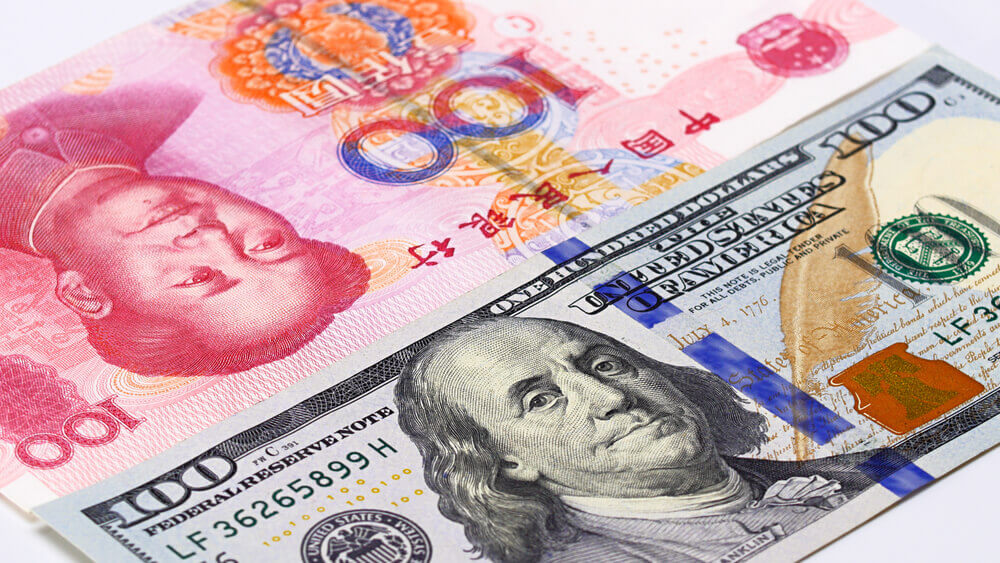
The U.S. dollar plunged low on Friday. What about Yuan?
The U.S. dollar tumbled to an almost three-month low today. It was set to experience a weekly loss. Traders contemplated the possibility of the Fed slowing its monetary policy tightening in December.
Moreover, the greenback struggled to rebound after thin trading on Thursday. Markets were subdued due to the U.S. Thanksgiving holiday. The U.S. dollar index exchanged hands at 105.8 against a basket of six major currencies, shaving off 0.05% on the day.
Ray Attrill, the head of FX strategy at National Australia Bank, noted that the markets still got the third consecutive day of positive risk sentiment. He thinks that such a mood is what’s keeping the greenback subdued across the board.
This week, the Federal Reserve released minutes from its November meeting, showing that a majority of policymakers agree on slowing the pace of interest rate hikes in the coming months. This news weighed on the U.S. currency, sending it in the red. The agency’s aggressive rate increases, along with market expectations of how high the Fed could take them, have been driving the greenback, causing its 10% surge this year.
The Japanese yen traded at 138.63 to the dollar on Friday, remaining mostly unchanged. In November, core consumer prices in Japan’s capital jumped at their fastest annual pace in forty years. The government data showed that they also exceeded the central bank’s 2% target for the sixth consecutive month.
How are the Euro and Sterling faring?
Meanwhile, the common currency climbed up against the greenback, adding 0.1% to $1.0420 on Friday. The Euro soared toward its four-month peak of $1.0481 reached last week. According to the GfK institute survey, energy measures will likely help German consumer sentiment to stabilize next month. This news boosted the European currencies. The British Pound also hit almost a three-month high versus the U.S. dollar.
According to the European Central Bank’s October meeting accounts, policymakers fear that inflation might be hard to shake off in the euro area. As a result, the ECB plans further rate hikes. However, investors expect a modest 50 basis point increase at the December meeting.
On the other hand, the New Zealand dollar plummeted by 0.26% to $0.6248. Despite that, the Kiwi traded close to its three-month high reached in the previous session. The currency was set to see a weekly gain of more than 1.5%. The Reserve Bank of New Zealand announced its 75 bp rate hike this week. The bank’s hawkish rate outlook supported the Kiwi.
Furthermore, the offshore Chinese yuan exchanged hands at 7.1662 to the greenback on Friday. The currency is headed for a second straight weekly loss as coronavirus worries weigh on investor sentiment. The markets also await a cut in banks’ reserve requirement ratio (RRR).
The Chinese government plans to use timely cuts in banks’ RRR, as well as other monetary policy tools, to keep the liquidity level high.
What about the EM currencies?
Most regional currencies and equities traded mixed on Friday as markets contemplated signals from the Fed. The Thai baht surged forward by 0.3% today. It seemed set to post its fifth straight weekly gain. At the same time, the Singaporean dollar jumped by 0.3%, but the Philippine peso tumbled down by the same percentage.
Traders are waiting for the Bank of Thailand’s rate decision which is due on November 30. On Monday, new data showed that the country’s economy grew at its fastest pace in over a year in Q3. This news reinforces expectations of a 25bp increase from the bank.
However, risk sentiment became fragile after China reported a record-high surge of daily coronavirus infections. Consequently, stocks in Jakarta and Bangkok plummeted by approximately 0.5% and 0.3%, respectively. Equities in Singapore also shaved off 0.3%. They were set to their first weekly loss in the month.
On Friday, Malaysia’s ringgit skyrocketed to a three-month high. Anwar Ibrahim became the new prime minister. After that, investors focus shifted to his cabinet appointments, as well as the budget plan for next year.
The ringgit rallied for the third consecutive session. It added 0.6% versus the U.S. dollar today, hitting its highest level in more than three months. Analysts at OCBC noted that MYR is likely to continue gaining with USD weakness extended, especially as election uncertainties dissipate in Malaysia. According to new data, Malaysia’s consumer price index also soared by 4% in October from a year earlier.




